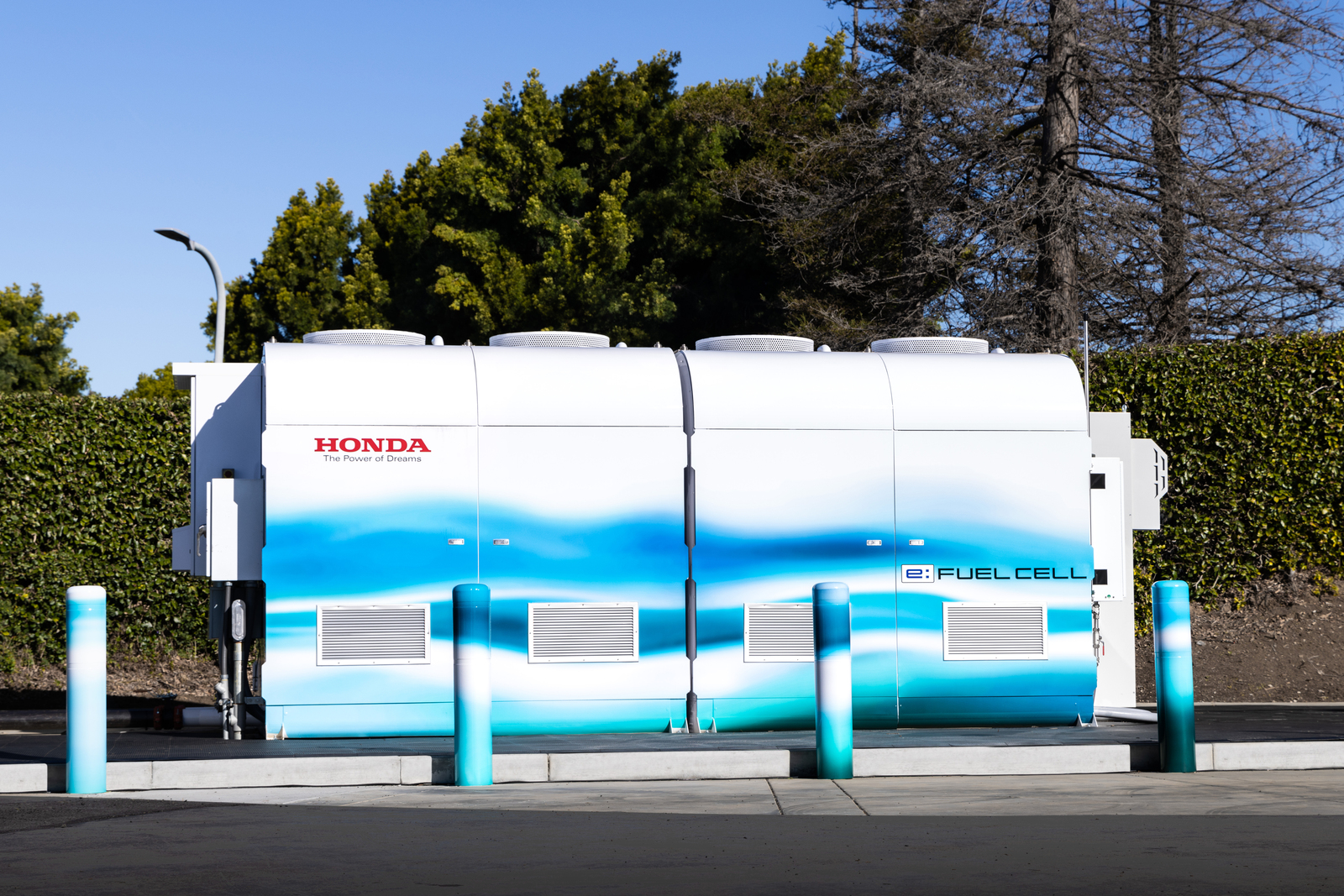Honda bailed on the Clarity — its only hydrogen-powered car in the U.S. — but the automaker hasn’t quit on fuel cells.
That’s the message Honda sent with a peculiar announcement today: It’s putting some old Clarity fuel cells back to work, combining them into a backup power system for its data center just south of Los Angeles.
This is just a “proof of concept,” Honda told TechCrunch, but it aims to commercialize the tech and sees potential applications beyond helping data centers keep the lights on.
The used fuel cell systems in Honda’s backup-power demonstration once powered leased Clarities (via an electrochemical reaction that combines hydrogen and oxygen to generate electricity). Honda retired these used fuel cells for transport, but they apparently still work well enough to drive its server farm in case of a power failure. Previously, Honda relied on diesel for backup power at the facility. (Honda said it uses this particular data center to “securely maintain and access its proprietary data,” because “automotive design is data intensive.”)
It’s nice to hear that Honda found a use for its old fuel cells, but crucially, this demonstration isn’t as environmentally friendly as it could be. The company told TechCrunch that it isn’t exclusively using green hydrogen in the pilot, which means at least some of it was generated via fossil fuels.
This is the trouble with using hydrogen to generate electricity: Fuel cells do so while spitting out only water and heat as exhaust, but they’re still indirectly pollutive if that hydrogen comes from dirty sources (as most hydrogen fuel does). Correcting this demands a whole lot more green hydrogen production, on top of whatever infrastructure is needed to deliver the hydrogen. This is why some automakers don’t believe in the future of hydrogen-powered cars; they argue it’s simply too much work to go that route.
But! Honda still believes in hydrogen-powered cars. In fact, this demonstration is also kind of an ad for Honda’s next-generation fuel cells, which the company developed with General Motors.
As Honda tells it, the next-gen fuel cell systems will power its upcoming hydrogen-powered vehicle, which is “based on the Honda CR-V” and is due in 2024.
Honda also plans to use these new fuel cell systems for backup power as it scales the tech. That means this effort won’t be as circular, if at all, when it’s commercialized. Yet, on the upside, Honda said it intends to exclusively use green hydrogen when it commercializes the backup-power units.
Beyond data centers, Honda added that it’s considering other applications, including “peak shaving.” This means Honda thinks industrial customers could use its generators at peak times, when electricity is priciest and grids are strained.
Honda said it aims to develop its proof of concept into a “new business model.” Yet, the pilot is also a convenient way for the company to talk up its new fuel cells. As battery-electric cars permeate the U.S. market, Honda has an interest in keeping hydrogen in headlines.
Honda’s aging hydrogen fuel cells get new life in data center by Harri Weber originally published on TechCrunch











